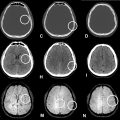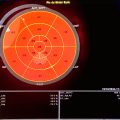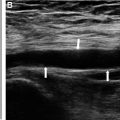Abstract
Spondylocostal dysostosis (SCD) is a rare autosomal recessive congenital disorder, characterized by a spectrum of clinical and radiographic abnormalities affecting the spine and chest. The key features of the syndrome include short stature, spinal abnormalities with vertebral malformations. These skeletal malformations result in a reduced thoracic cavity, leading to respiratory complications, often accompanied by frequent chest infections. Diagnosis is primarily made in newborn phase, based on characteristic physical appearance, symptoms of thoracic insufficiency, family history, skeletal surveys, and, when available, genetic testing for specific mutations. While the syndrome’s severity varies, milder forms are compatible with life, while more severe cases present significant challenges in respiratory management. We report the case of a 9-year-old girl diagnosed with SCD based on clinical-radiological findings.
Introduction
Spondylocostal dysostosis (SCD) is a rare congenital disorder characterized by defective vertebral segmentation and rib malformations, often leading to severe skeletal deformities and respiratory complications. Initially described by Jarcho and Levin in 1938, SCD is often confused with spondylothoracic dysostosis (STD), which has a distinct genetic and clinical profile [ ]. The condition exhibits autosomal recessive and dominant inheritance patterns, with mutations in genes associated with the Notch signaling pathway, such as DLL3, MESP2, LFNG, and HES7, playing a crucial role [ ]. Given the heterogeneity of clinical presentations, SCD remains a diagnostic and management challenge. This article describes a case of SCD in a pediatric patient and highlights the role of radiological findings in diagnosis and management.
Case report
A 9-year-old girl presented to our department for a spine CT to explore her kyphoscoliosis, as part of her pretherapeutic assessment. Clinically, she presented a short neck and trunk, asymmetric thoracic cage, abnormal curvature and scoliotic spine with protuberant abdomen. She is an only child. The parents’ medical history revealed second degree consanguinity. The pregnancy was poorly monitored, with only one antenatal ultrasound performed at 20 weeks of gestation, which was unremarkable. Delivery was vaginal at term, with a birth weight of 2900 g and APGAR scores of 10/10/10. No family members present any kind of congenital malformations. The patient exhibits normal psychomotor development and has no respiratory symptoms. The CT scan performed included the cervico-thoraco-lumbar spine without any contrast enhancement. It was analyzed using multiplanar reconstruction in parenchymal and bone windows and with 3D VR. The results showed a severe right angled cervico-thoracic kyphoscoliosis ( Fig. 1 ), with vertebral malformations: hemivertebrae of D5 ( Fig. 2 ) and unfused spinous processes. Remarkable rib malformations were also noted: widened right intercostal spaces while the left ones are narrowed, posterior partial rib fusion of right K5 and K6, anterior bifid aspect of K4, and enlargement of K3 with the start of separation of an accessory inferior rib ( Fig. 3 ). Plus, spinal canal stenosis at the peak of the curvature was evident, potentially compressing neural cord ( Fig. 4 ) The combination of these findings with family history of consanguinity and the morphological findings concluded to SCD. Genetic screening was not conducted due to the parents’ refusal.













